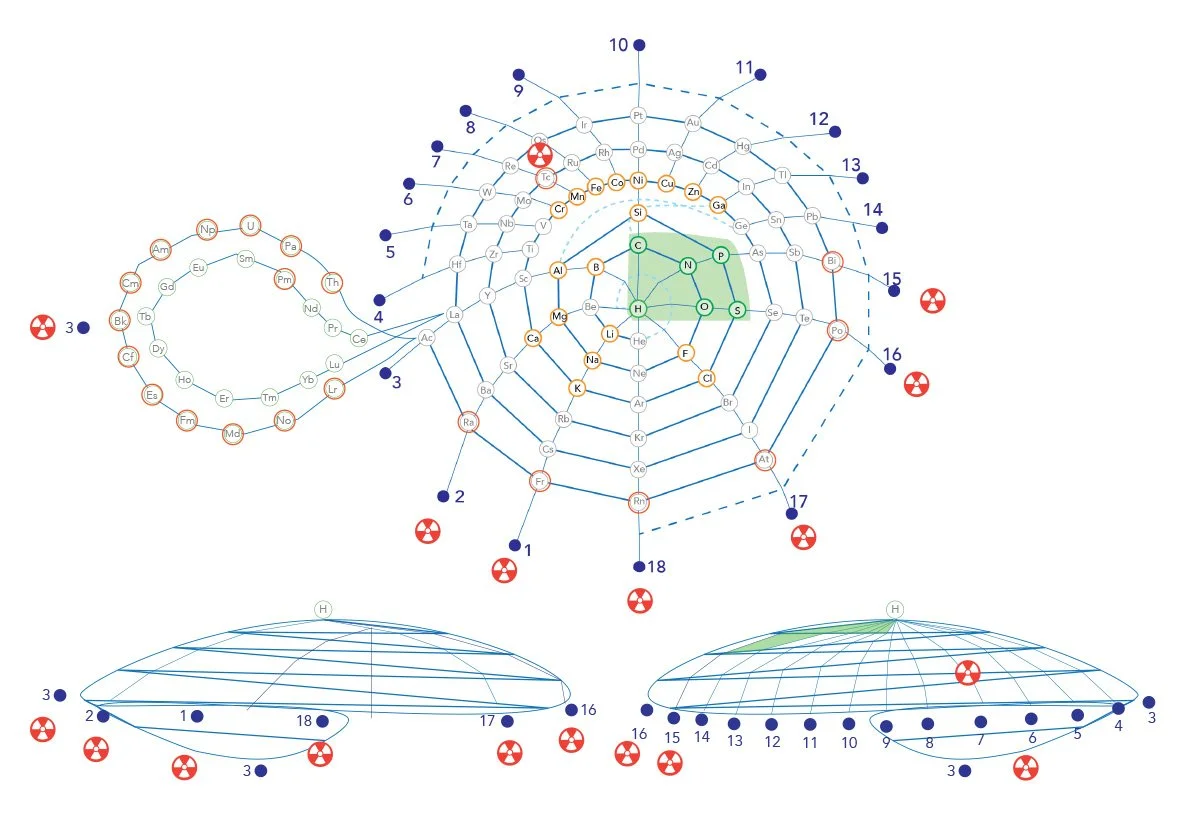The Periodic Table as Nature Sees It
Make it stand out
Over the years I keep revisiting the periodic table of the elements. Why do we represent atoms with such human parameters? What if we rethought the periodic table as nature sees it?
The Web of Life
At the quantum level, Hydrogen and Helium are next door neighbors. In this reimagining of the periodic table, I found a way to make them neighbors! If we refashion the periodic table of the elements as a spider web, we can see the web of life.
The one concession for periodicity that I had to make was wrapping a period around the web. This was handled with transitional paths that hold the web together. These are managed with dashed lines to denote a shift in periodicity.
The Green Zone
NHCOPS at the center of the web
At the center of the web, wedged in between periods 10, 14, and 15 lies the “Green Zone” where Nitrogen, Hydrogen, Carbon, Oxygen, Phosphorus, and Sulphur live. These six elements are ESSENTIAL to all life on this planet (and any planet we know of). I love how the central six atoms of life sit wight there in the middle of the web.
When I teach this I characterize each atom with a set of personalities and characteristics. It’s a fun way to reframe how we think about the chemistry, physics, art, and geometry of the periodic table of the elements. Let’s tell the story of life told at the quantum and macro level.
Nitrogen is the neutral arbiter and and it modifies atomic structures. Hydrogen just wants to bond, bond, bond! Carbon is the body of the universe. Oxygen is the fire and the origin of all transformation. While Phosphorous is the strong backbone, and sulphur disrupts and dismantles everything. They are a chorus at the heart of the web.
I think this is a very romantic way to think about the boring periodic table of the elements. This is all of them. And even the actinides and lanthanides have a role here!
The Danger Zone
If you have ever made a cone or a conic section, you know that you need to remove part of the circle to an arc that will create that cone. In this reformulation of the periodic table, the lanthanides and actinides slip out and wrap under the rest of the cone. In addition, all of the radioactive elements live far away from the green zone at the edge of the cone.
In the standard table the two active periods of the lanthanides and actinides just sit there, unexplained. In a cone web formulation, the lanthanides and actinides just loop under the cone and live inverted there. It’s a very elegant formulation.
Plan and elevation views of the Periodic Table as a web of life. Note the radioactive edge, the flip under of period 3 and the location of the green zone.
What else do I like about this formulation? It places the “Green Zone” safe and curving far above the radioactive base. In addition, The Actinides are the furthest away AND situated on period 3 where the lions share of the “Green Zone” is over atop periods 10, 15, and 16. It’s exactly where life would put the most delicate payload.



